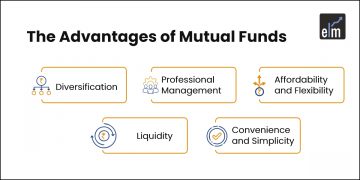Bengali: এই ব্লগটি এখানে বাংলায় পড়ুন।
Hindi: आप इस लेख को हिंदी में भी पढ़ सकते है|
“Mutual funds investments are subject to market risks” – this is the line you hear hurriedly uttered by the voice over artist during advertisements urging you to become an investor. However, just being aware of market risks will not shield you from the mistakes you could be making when you invest.
Firstly, if you haven’t started investing in mutual funds yet, begin now.
Although it is advisable to start investing in mutual funds as soon as you start receiving a paycheck, it is never too late to dip into the mutual funds sector, especially since there are so many types of schemes to choose from.
Nevertheless, awareness of your financial goal is imperative and should guide your investment decisions.
There could be many investors in the Indian market that may be erring in their strategy, so here are 10 mistakes you should avoid making while investing in Mutual funds:
1. Not being clear in financial goals:
Whether it is buying a car, your child’s education, a vacation or retirement, understanding your requirement should be the first step towards investment.
The goal can even be something like tax-saving (if you choose to be in the older tax regime). In which case you can invest in ELSS schemes (popularly known as tax-saving funds) only once you have a goal that you want to reach would you be able to set a timeline, allocate funds to go into your investment and head to the next step of selecting a scheme. Not having a financial goal could make your investment directionless.
2. Not understanding your risk profile:
Your risk profile refers to the amount of risk you are willing to take (risk appetite) when investing. This depends on your age, how you earn your livelihood and your financial liabilities.
If you are a new investor, who has just started earning your investment horizon and budget may differ from that of a middle-aged person who earns comparatively more than a fresher, but doesn’t have a very long-term goal. Both of these risk profiles will also contrast to that of a retired individual who is seeking to park funds safely, but creating wealth in the meantime.
3. Budgeting wrong:
One must be aware of their financial responsibilities and liabilities before setting up SIPs or buying fund units in lumpsum amounts. You shouldn’t be borrowing for investing in mutual funds as that is a counter-intuitive strategy.
Learn to invest in Mutual Funds with Mutual Fund Made Easy course by Market Experts
Moreover, it is alright to start small, one can always set up step-up SIPs, buy additional units of good-performing schemes at a later stage when you have more cash at hand. Do not buy schemes when you are short on liquidity for day-to-day needs.
4. Short-term investments in equity instruments:
Mutual fund schemes broadly consist of equity and debt funds. Often times one can make the mistake of investing in equity funds and expecting substantial returns in a short time (6 months – 1 year), without the knowledge that equity funds create wealth over the long term. Alternatively, if you seek short-term returns you could consider debt funds or even international funds. Nonetheless, having a corpus to invest in these is vital.
5. Investing over-enthusiastically:
Investing in way too many schemes or over diversification can do you more harm than good. For one, keeping track of their performance could prove cumbersome. Secondly, different kinds of funds even within the same category (for example equity) will have varied investment strategies. Investing in various types of schemes could on the one hand increase your exposure but also raise risk. It is advisable to hold onto a maximum of 4-5 equity schemes and a couple of debt or index funds only.
6. Timing the market:
This is a phenomena that is common for seasoned traders. It is also more common to buying and selling of stocks in the share market, a considerable difference between mutual fund investments and trading in equities. As a mutual fund investor, timing the market should not be your first concern, especially if you have set up SIPs.
Timing the market may be true for lumpsum investments, where you can buy more units for a slightly less amount when markets are down. But nonetheless, the risk that your timing may falter is higher than it being precise. You should use the market impulse to reconfigure the portfolio based on a calm and composed mindset rather than reacting to them abruptly. It is advised that you do not delve into this as a new mutual fund investor, in fact let your SIPs do the work for you.
7. Being complacent about your portfolio:
Although previously said that you let your SIPs do the work for you, do not just turn a blind eye to how your funds’ performances. It is advisable to take a look at the returns generated, but keep in mind that the category of funds and you have invested in to assess the returns.
If a fund is consistently under performing it is advised to redeem it and invest in one in the same category which is better performing. A little bit of research will be required when you make a decision to do this.
Suggested Read – 7 Things to KNOW before Buying THE RIGHT MUTUAL FUND
A major policy change within the macroeconomic scenario or under performance of certain sectors could also lead to lower or negative returns, be careful when you review your portfolio performance, otherwise seek advice.
8. Decisions driven by emotions:
Yes, humans are emotional beings but making financial decisions, especially investment ones, driven by certain feelings could land you into not so pretty consequences. Avoid going in with a personal bias when you invest, let’s say liking towards a mutual funds house or scheme.Base your investments on some amount of research to reap benefits from intelligent investments.
9. Not Factoring in Inflation:
Focusing on nominal returns instead of real returns is another common mistake. Inflation is a factor that can erode into your returns; the real returns number can be arrived at by looking at the performance of the investment after factoring in inflation in the economy.
One should always keep a check on how the rising costs can impact your standard of living and what it would take to meet the rising demands due to this. Investing for the long term, especially with SIPs could help inflation-beating returns.
10. Focusing on only one aspect:
Do not let one aspect or goal dominate your investment style. For example excessive focus on tax saving or trading. Tax saving is only one of the key factors which affect the choice of an investment instrument.
You can include an ELSS if you stick to the old regime of tax payment, but regard your portfolio as a means to increase corpus and generate substantial returns. Moreover, patience is also the key. Thus, trading should not become a focal point of your portfolio. You can watch the market closely but avoid taking buy or sell calls in any rush (in lumpsum investments).
This is because such instant investment decisions not only result in high transaction fees but could trap you in unforeseen risks arising from frequent portfolio churning.
In a nutshell, understanding where you could go wrong sets you up for a healthy investing future. Remember to take some risks, but do not bet all your financial ambitions in one place.
BOTTOMLINE
Before Investing on Mutual Funds gather proper knowledge by applying from the course Mutual Fund Made Easy and Basics of Investing on Mutual Funds on Elearnmarkets.
Also Read: 2 Steps Checklist on Starting Systematic Investment Plan (SIP)
Check Stockedge to get latest market updates and avail various Technical and Fundamental Scans of the Financial Markets.









